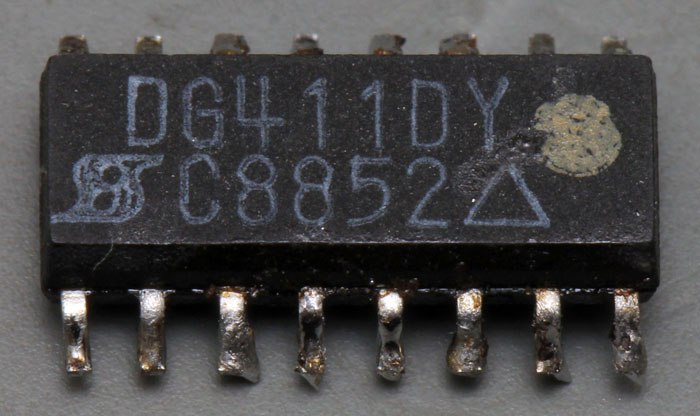
Siliconix DG411...
[...]
https://www.richis-lab.de/aswitch06.htm
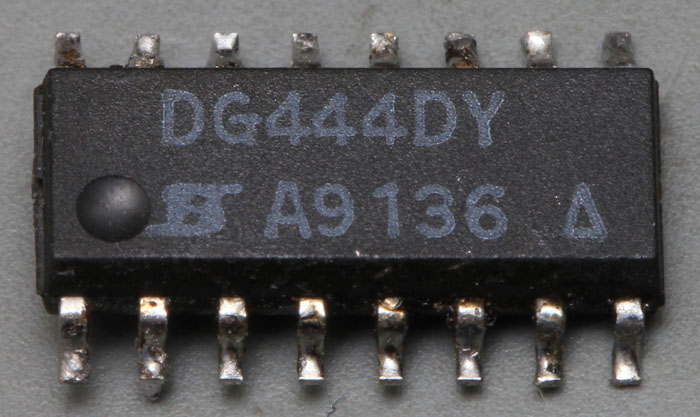
We had the DG411 now let´s compare it with the DG444. The Siliconix DG444 is a 4-channel analog switch like the DG411. The two devices have many things in common. However, when an analog switch is closed, the DG411 offers a lower resistance of 35Ω maximum. In the case of the DG444, one must expect up to 85Ω. In return, the parasitic capacitances of the DG444 are lower. The typical charge displacement of 1pC is just one fifth as large as with the DG411. In addition to the DG444 with NO switches, the DG445 offers the same switches as NC types.
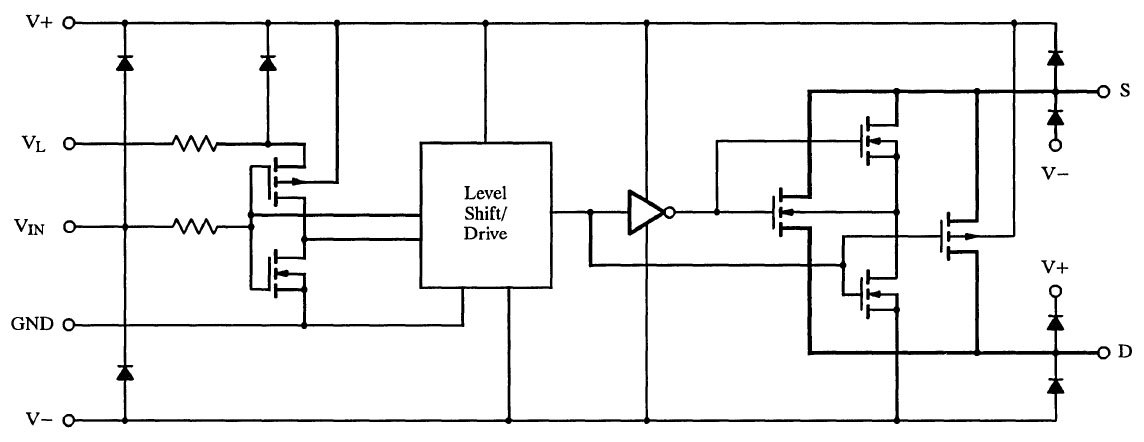
The circuit diagram shown in the datasheet contains the same parts as in the datasheet for the DG411.
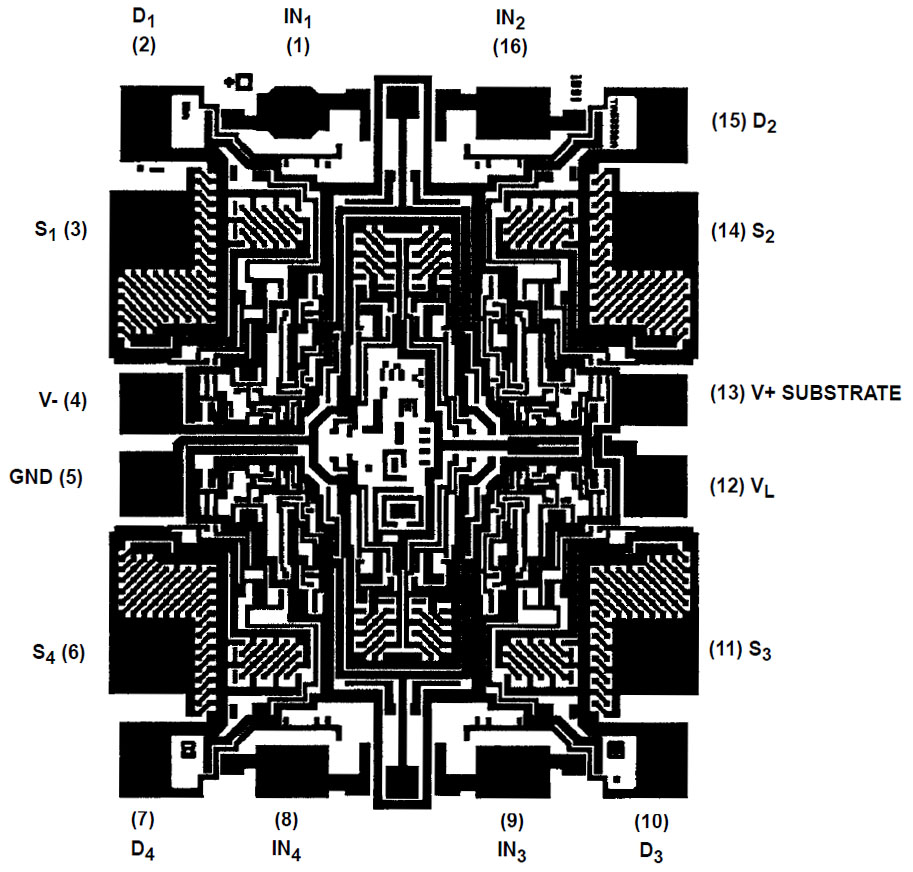
The datasheet includes an image of the metal layer and specifies the size of the die as 2,16mm x 1,76mm. It is thus noticeably smaller than the die of the DG411.
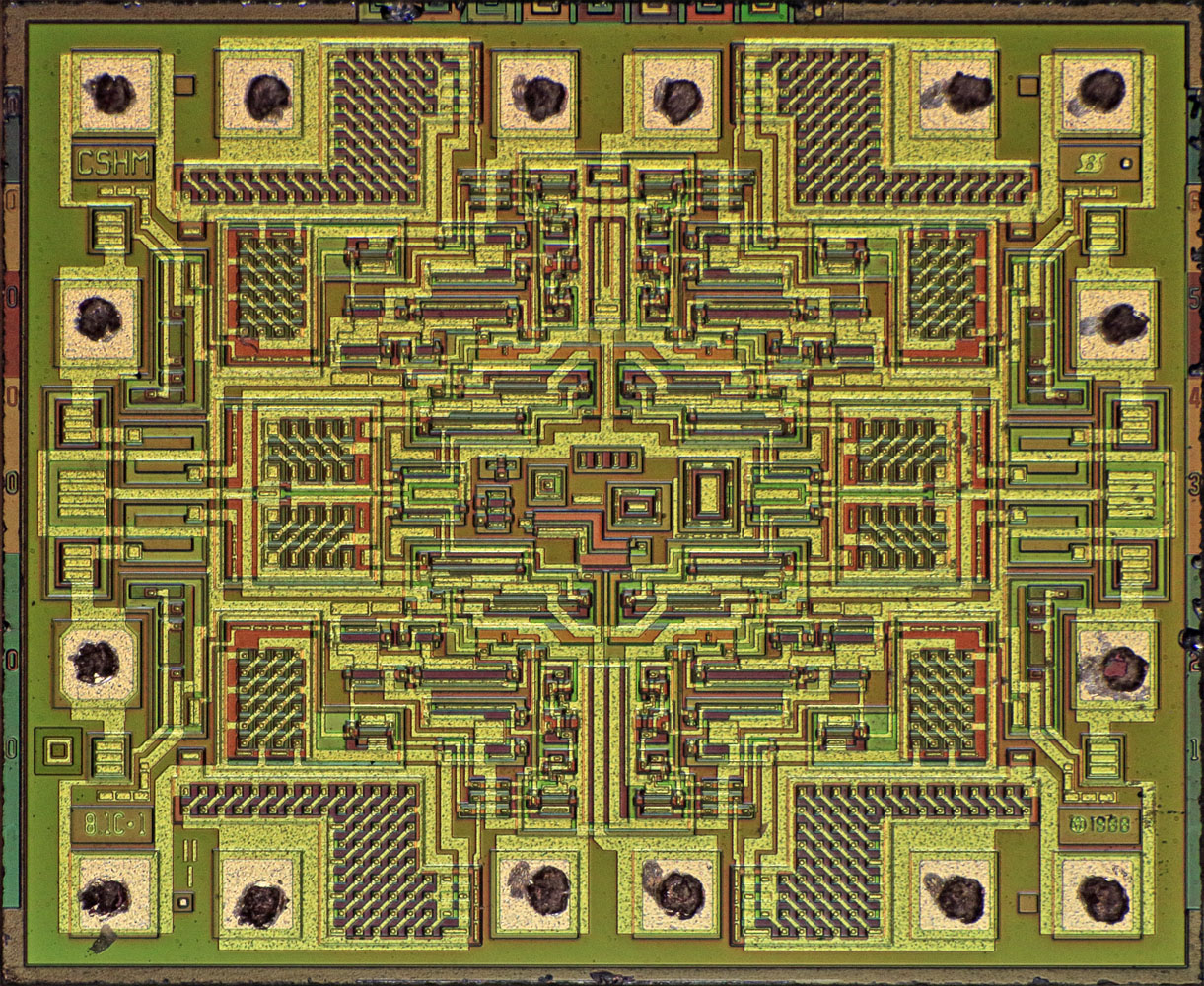
The metal layer on the die largely corresponds to the representation in the datasheet. Apparently, just the additional markings and labels have changed somewhat.
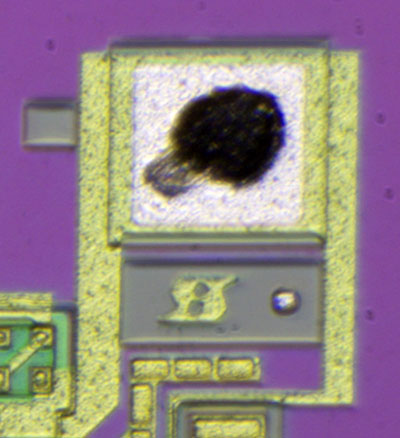
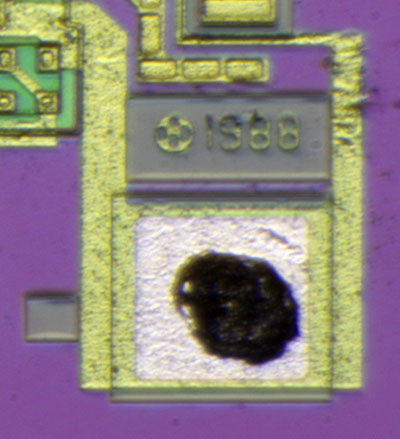
Different inscriptions are shown in each corner of the die, including the Siliconix logo and the year 1988.
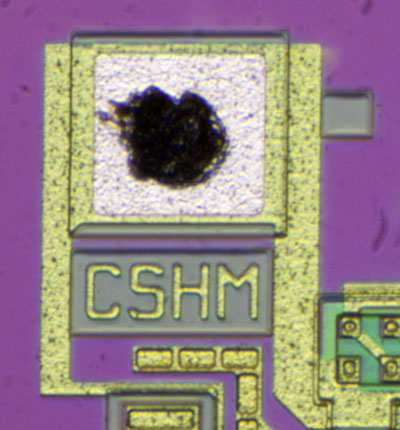
The string CSHM is probably the internal designation for this type of analog switch. On the DG408 the characters CSICI are shown, on the DG411 it is the characters CSHN.
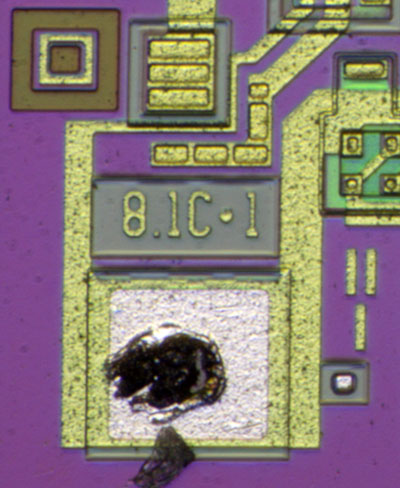
As on the DG411, there is also a character string that presumably identifies the variant of the metal layer and thus the analog switch. It seems very likely that on the same die, besides the DG444, the DG445 can also be realized.
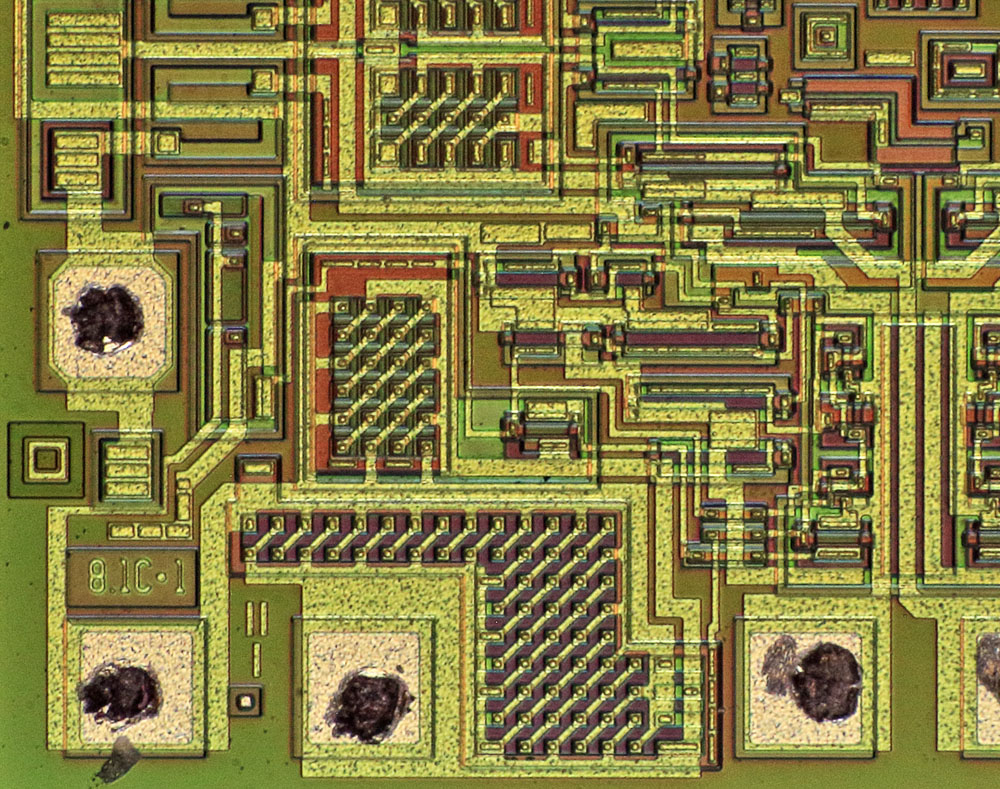
Some areas, such as the structures at the inputs, are built in the same way as the DG411. The large switching transistors have the same structures, but are much smaller. This was to be expected due to the specifications. Interesting is the capacitor on the right of the left bondpad. This capacitor makes it possible to keep the charge injection low during switching. The capacitor offers several surfaces that can be connected as required to optimize this effect.
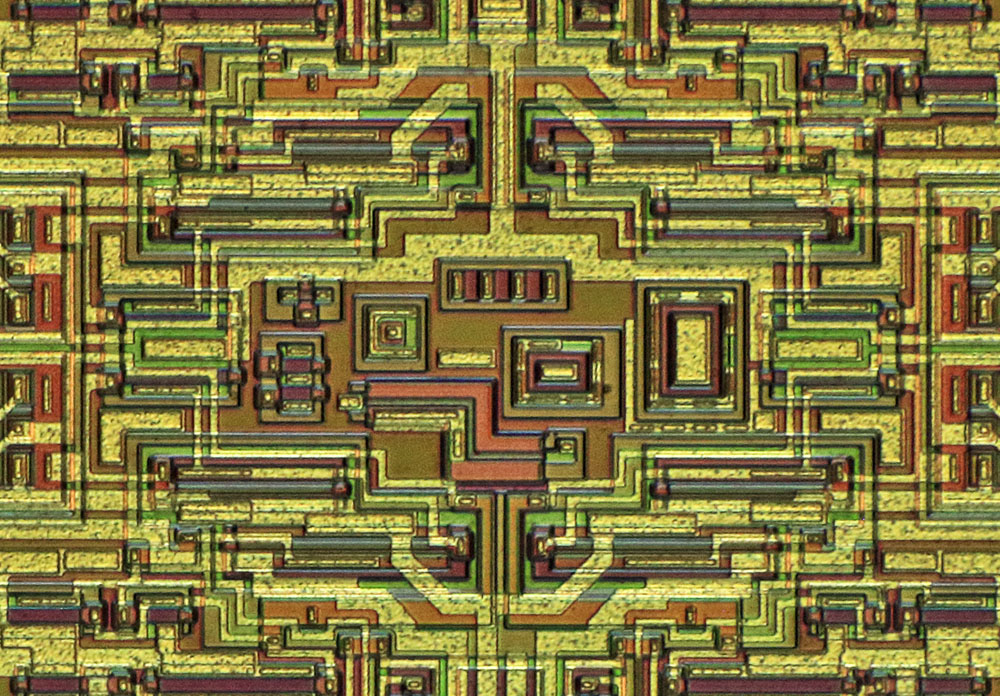
In the center there are some unused elements. Maybe the inversion of the control logic is realized here (DG444/DG445).
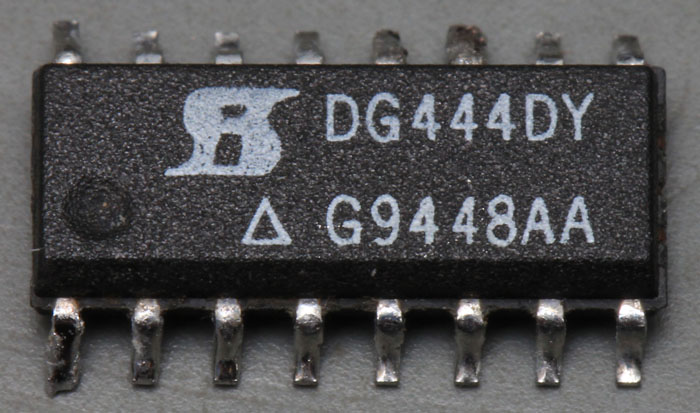
The printing on this DG444 looks significantly different from the DG444 above. The second line seems to be a date code. This would make the analog switch shown here 3 years younger.
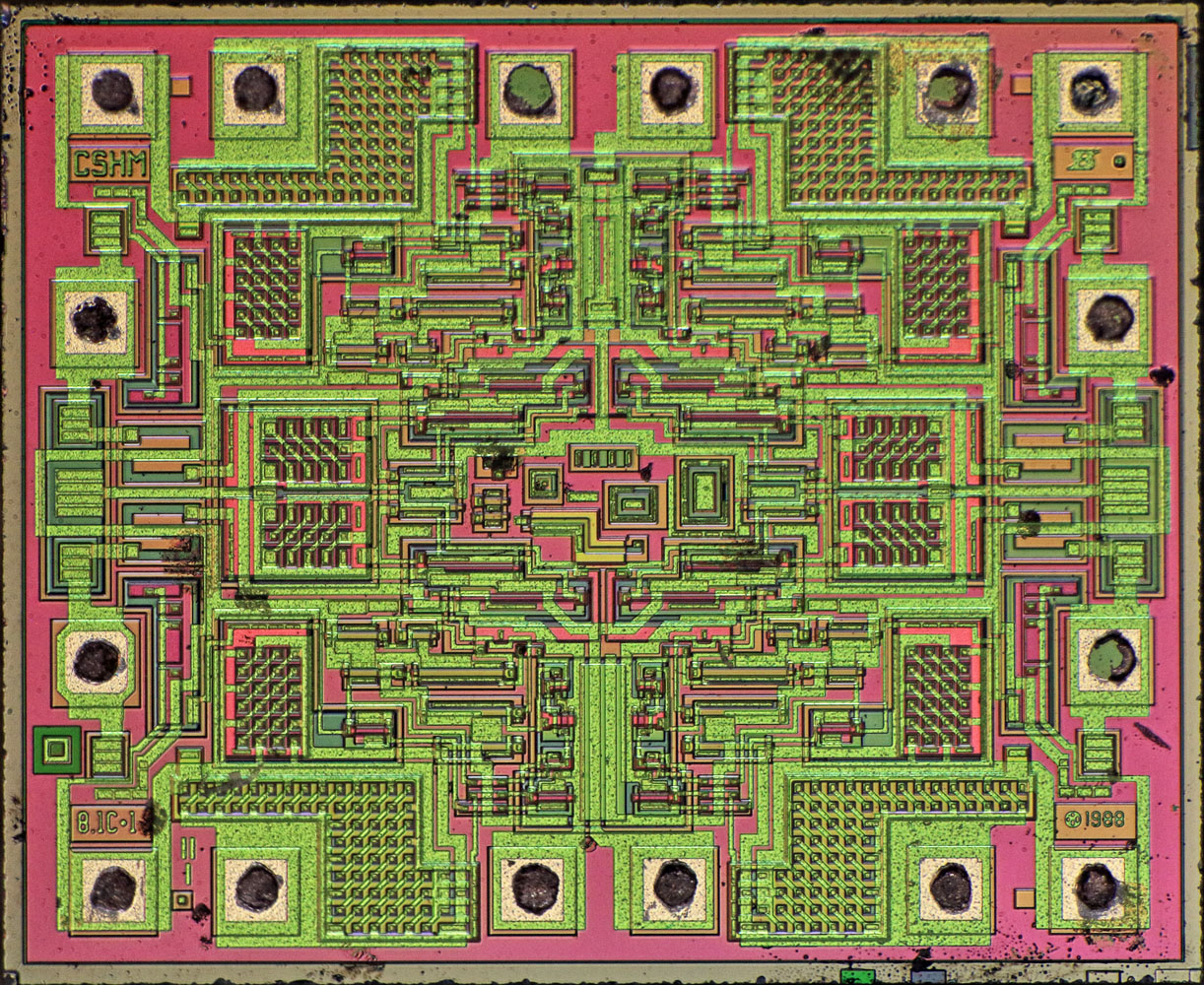
It turns out that it is the same die.
https://www.richis-lab.de/aswitch08.htm 